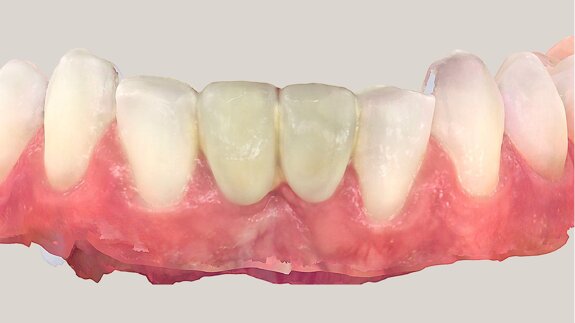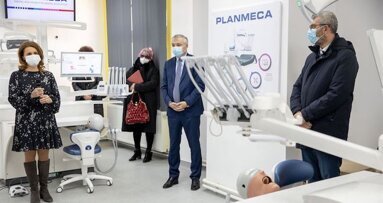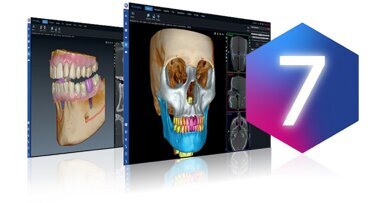LEIPZIG, Germany: Artificial intelligence (AI) is transforming healthcare across disciplines, and dentistry is no exception. While its clinical applications are still being refined, the integration of AI into dental education is fast becoming a priority. A recent wave of studies published in established journals have shed light on the role AI is already playing in shaping how dental students learn, communicate and prepare for the future of practice.
A sweeping review published earlier this year in eClinicalMedicine explores the growing role of AI in medical education more broadly, highlighting the transformative potential of machine learning technologies such as natural language processing and large language models. While the study focuses on medicine rather than dentistry, its relevance is clear. It underscores a fundamental shift: AI is no longer a futuristic add-on but a core component of how healthcare knowledge is produced, shared and applied. The authors emphasise the need for both technical literacy and ethical awareness in AI-enhanced educational environments. These competencies will be crucial not only for doctors but also for dental professionals, whose diagnostic and clinical decision-making will increasingly be augmented by intelligent systems.
A comprehensive framework for incorporating AI into dental education has also been proposed in an article in the International Dental Journal. The authors outline a multiphase approach, beginning with faculty development and extending to curriculum redesign, digital infrastructure and cross-disciplinary partnerships. One notable point is the emphasis on interprofessional collaboration: the bringing together of data scientists, AI specialists and dental educators to co-create relevant and responsible learning modules. The article highlights the importance of moving beyond theoretical discussions of AI to hands-on exposure, giving students the chance to interact directly with tools like AI-driven radiographic software or decision-support systems. This real-world integration, it argues, is essential to building long-term competence and trust in AI.
While institutions may be moving towards AI adoption, another study, published in the Journal of Taibah University Medical Sciences, reported that dental students’ detailed knowledge of AI remains limited. Surveying undergraduate students, the study found that, while many expressed interest in AI, few had received any formal training. There was also significant uncertainty around what AI is, how it functions and what implications it holds for clinical practice. The findings suggest an urgent need for foundational AI education to be embedded early in the curriculum. Without this groundwork, students risk graduating into an AI-driven industry without the tools to engage with it critically or confidently.
Beyond the classroom, AI is changing how dental professionals communicate with patients. A study published in Cureus explores the role of AI in patient education and engagement, highlighting tools that help explain diagnoses, simulate treatment outcomes and personalise oral health recommendations. These systems not only enhance patient comprehension but also support shared decision-making and treatment adherence. The article emphasises that dental education must prepare future practitioners not just to use AI for clinical analysis, but to act as intermediaries between AI systems and patients or mediate its use in patient communication—translating complex outputs into accessible, empathetic conversations. Communication training, it suggests, should now include an AI component.
The question of AI literacy is tackled head-on in an article in Education Sciences, which argues that effective AI integration in dentistry must go beyond isolated modules or electives. Instead, it recommends a holistic model in which AI understanding is scaffolded throughout the educational journey—from preclinical courses to final-year rotations. The article calls for alignment between pedagogical goals and technological tools to ensure that AI is not simply added on but strategically embedded to support learning outcomes. It also raises important equity concerns: access to AI resources and training must be widespread, or there is the risk of deepening educational divides within the profession.
Together, these studies paint a clear picture: the integration of AI into dental education is not a luxury but a necessity. Affecting everything, including institutional frameworks, student mindsets and patient interactions, the digital shift is underway. For dental schools, the challenge is not simply to adopt AI technologies, but to cultivate critical, capable users of them. As the clinical landscape continues to evolve, so too must the educational systems that prepare dentists for tomorrow’s practice.
Topics:
Tags:
COLOGNE, Germany: Sustainable oral health is achieved not only through the use of high-quality products but especially through knowledge and correct use. ...
MANCHESTER, England: Perhaps the most useful and pervasive application of artificial intelligence (AI) in the average person’s life is the large language ...
HELSINKI, Finland/TÂRGU MUREŞ, Romania: The first fully digital Planmeca dental treatment simulation units were installed at the George Emil Palade ...
Immediate loading is increasingly being offered as a routine method in dental implant surgery. However, according to Dr Mauro Labanca, it should be handled ...
HELSINKI, Finland: From 30 June to 4 July, representatives from over 40 dental schools gathered in Helsinki for the 2025 Dental Education Summit to ...
HELSINKI, Finland: Finnish dental manufacturer Planmeca has announced the release of Romexis 7, the latest version of its all-in-one dental software. First ...
KUOPIO, Finland: Once considered science fiction, haptics-enhanced virtual reality (VR) training now plays a supportive role in dental simulation practice ...
HELSINKI, Finland: On 2 and 3 July, representatives from over 60 dental schools gathered in Helsinki for the Dental Education Summit 2024 to explore the ...
DUNDEE, Scotland: As the global health community marks World Mental Health Day today, the dental profession is being urged to confront a pressing concern ...
BOSTON, US: Dental artificial intelligence (AI) startup LightSpun has secured US$13 million (€11 million*) in new funding, positioning the company at ...
Live webinar
Mon. 12 January 2026
9:00 am EST (New York)
Prof. Judith Jones D.D.S; M.P.H., Prof. Kakuhiro Fukai D.D.S., Ph.D, Dr. Bathsheba (Bethy) Turton
Live webinar
Wed. 14 January 2026
12:00 pm EST (New York)
Dr. Théo Laplane, Dr. Robert Gottlander DDS
Live webinar
Fri. 16 January 2026
12:00 pm EST (New York)
Live webinar
Mon. 19 January 2026
1:00 pm EST (New York)
Philipp Kopp, Michael Seeber
Live webinar
Thu. 22 January 2026
2:00 pm EST (New York)
Dr. Nicola M. Grande DDS, PhD
Live webinar
Wed. 28 January 2026
8:00 am EST (New York)
Live webinar
Wed. 28 January 2026
11:00 am EST (New York)
Prof. Dr. Jan-Frederik Güth



 Austria / Österreich
Austria / Österreich
 Bosnia and Herzegovina / Босна и Херцеговина
Bosnia and Herzegovina / Босна и Херцеговина
 Bulgaria / България
Bulgaria / България
 Croatia / Hrvatska
Croatia / Hrvatska
 Czech Republic & Slovakia / Česká republika & Slovensko
Czech Republic & Slovakia / Česká republika & Slovensko
 France / France
France / France
 Germany / Deutschland
Germany / Deutschland
 Greece / ΕΛΛΑΔΑ
Greece / ΕΛΛΑΔΑ
 Hungary / Hungary
Hungary / Hungary
 Italy / Italia
Italy / Italia
 Netherlands / Nederland
Netherlands / Nederland
 Nordic / Nordic
Nordic / Nordic
 Poland / Polska
Poland / Polska
 Portugal / Portugal
Portugal / Portugal
 Romania & Moldova / România & Moldova
Romania & Moldova / România & Moldova
 Slovenia / Slovenija
Slovenia / Slovenija
 Serbia & Montenegro / Србија и Црна Гора
Serbia & Montenegro / Србија и Црна Гора
 Spain / España
Spain / España
 Switzerland / Schweiz
Switzerland / Schweiz
 Turkey / Türkiye
Turkey / Türkiye
 UK & Ireland / UK & Ireland
UK & Ireland / UK & Ireland
 Brazil / Brasil
Brazil / Brasil
 Canada / Canada
Canada / Canada
 Latin America / Latinoamérica
Latin America / Latinoamérica
 USA / USA
USA / USA
 China / 中国
China / 中国
 India / भारत गणराज्य
India / भारत गणराज्य
 Pakistan / Pākistān
Pakistan / Pākistān
 Vietnam / Việt Nam
Vietnam / Việt Nam
 ASEAN / ASEAN
ASEAN / ASEAN
 Israel / מְדִינַת יִשְׂרָאֵל
Israel / מְדִינַת יִשְׂרָאֵל
 Algeria, Morocco & Tunisia / الجزائر والمغرب وتونس
Algeria, Morocco & Tunisia / الجزائر والمغرب وتونس
 Middle East / Middle East
Middle East / Middle East
















































To post a reply please login or register